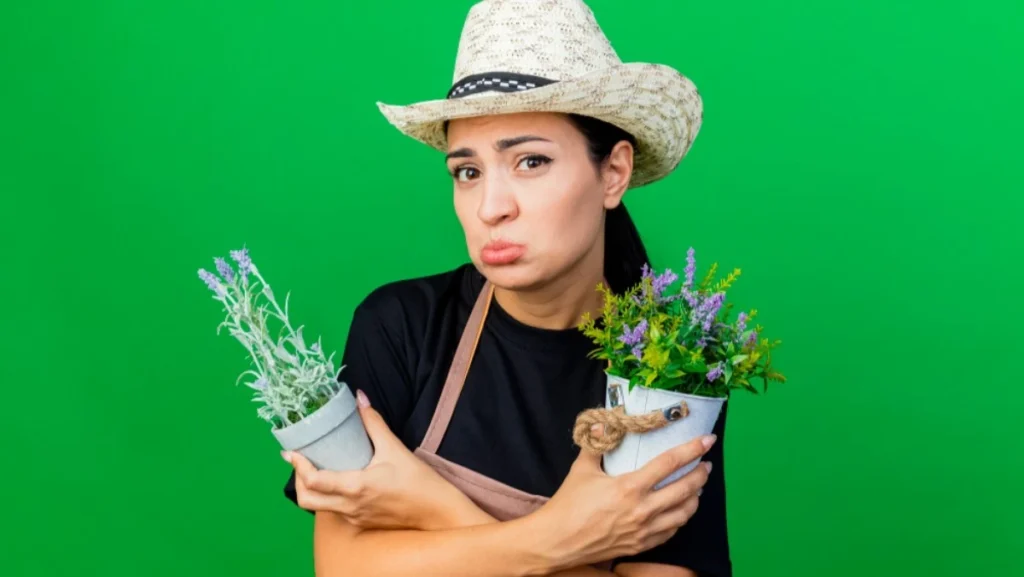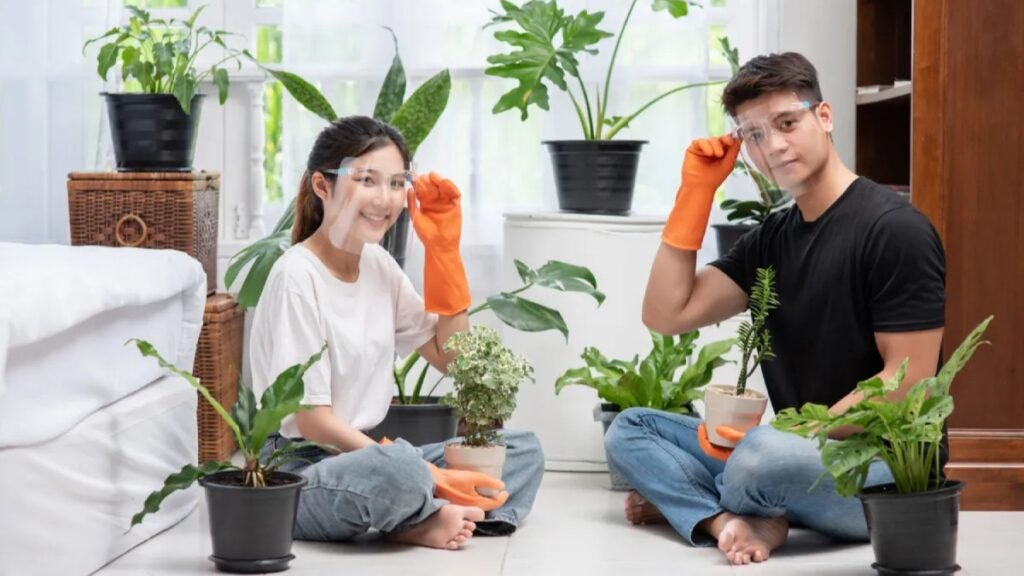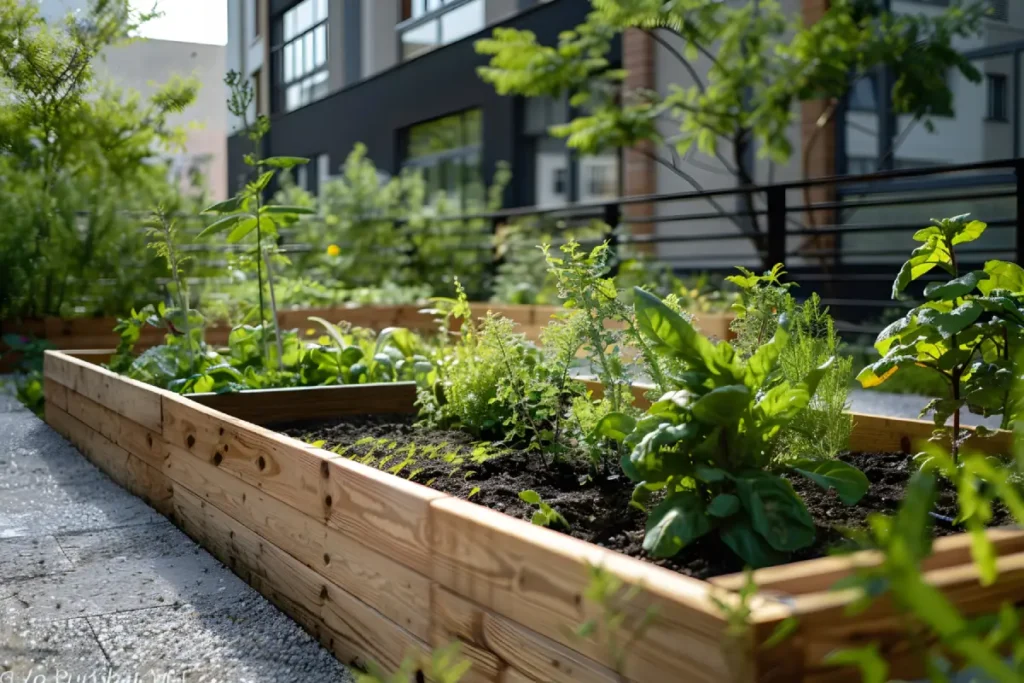Plant Spacing Calculator
Plan your garden layout efficiently with this calculator. Determine the optimal spacing for your plants and maximize your garden’s productivity.
Garden Details
Results
Summary
Plant Spacing Calculation Report
Your personalized garden planting plan
Garden Details
Calculation Results
Gardening Tips
• Proper spacing ensures adequate sunlight and airflow for plants
• Consider companion planting for natural pest control
• Rotate crops annually to maintain soil health
• Add compost or organic matter before planting to enrich soil
- Plant Spacing Calculator
- Garden Details
- Results
- Plant Spacing Calculation Report
- Why Spacing Matters
- Why Proper Spacing is Crucial
- Understanding Plant Spacing
- Types of Plant Spacing
- How to Use the Plant Spacing Calculator
- Why Plant Density Matters
- Specific Garden Types and Their Spacing Needs
- Advanced Planting Layouts
- Conclusion
Why Spacing Matters
Proper plant spacing is essential for a thriving garden. It’s one of those details that, when done right, can really set your plants up for success. Whether growing vegetables, flowers, or herbs, ensuring your plants have enough space allows them to develop strong, healthy, and vibrant.
A plant spacing calculator helps you plan your garden layout by suggesting the ideal distance between two plants based on their size, growth habits, and the space available. It’s a simple way to avoid overcrowding, which can lead to poor growth and diseases, and to make the most of your garden.
Why Proper Spacing is Crucial
Spacing isn’t just about making your garden look neat. It’s about giving each plant the space it needs to thrive. Here’s why it matters:
- Better Airflow: When plants have enough space, the air can circulate properly around them. This reduces moisture buildup, which can cause diseases like mildew. A well-spaced garden stays dry and healthy.
- Stronger Roots: If plants are too close together, their roots can get tangled or squished, limiting their ability to absorb water and nutrients. Giving them space allows roots to grow freely, which helps the plant grow stronger.
- Sunlight: Each plant needs sunlight to grow. When plants are overcrowded, some end up in the shade, which limits their growth. Proper spacing ensures every plant gets enough light.
- Preventing Disease: Overcrowded plants are more likely to spread pests and diseases. Proper spacing creates barriers, making it harder for these problems to spread.
Spacing your plants correctly sets them up for success. It means stronger roots, better airflow, more sunlight, and less chance of disease. Here’s a quick look at how proper spacing benefits your garden:
| Factor | What it Affects |
| Air Circulation | Reduces moisture, preventing fungal diseases. |
| Root Growth | Gives roots room to spread and absorb nutrients. |
| Sunlight Exposure | Ensures every plant gets the light it needs to grow. |
| Disease Prevention | Reduces the spread of pests and diseases. |
By understanding how to space your plants, you can avoid overcrowding and ensure each plant has the best chance to thrive. This leads to a healthier, more productive garden.
Understanding Plant Spacing

Why Plant Spacing Matters
Plant spacing is all about giving your plants the room they need to grow healthy and strong. The correct distance between plants depends on several factors, including plant type, size, and growth habits. Proper spacing of plants ensures that plants have enough resources, while overcrowding or too much space can lead to wasted garden space or poor plant development.
Factors that Influence Plant Spacing
Here’s what you should keep in mind when determining how far apart to plant each variety:
- Plant Type: Every plant has different space needs. Larger plants like tomatoes and cucumbers require more room than smaller ones like radishes or lettuce.
- Mature Size: Consider how big the plant will be once fully grown. Tall plants like sunflowers need more space than compact plants like marigolds.
- Growth Habits: Some plants spread out (e.g., squash or melons), while others grow tall and narrow (e.g., peas and beans). Knowing the plant’s growth pattern is key to determining its spacing.
- Sunlight and Airflow: Plants needing full sunlight or dry conditions must be spaced well apart. This helps them avoid shading one another and keeps the air circulating them, preventing diseases.
A plant spacing calculator can help simplify this process by considering these factors, ensuring each plant gets the perfect amount of space for optimal growth.
By understanding the different factors that affect plant spacing, you can create an efficient garden that is primed for healthy, thriving plants.
Types of Plant Spacing
When planning your garden, choosing the correct plant spacing is key to maximizing space, light, and airflow, influencing plant health. There are three main types of plant spacing: square, row, and triangular. Each one works best for different kinds of plants and garden layouts, so understanding these options is crucial for optimal growth.
1. Square Spacing
Square spacing is a traditional method where plants are spaced evenly in a grid pattern. Each plant is placed at the same distance from its neighbors in all directions. This layout is perfect for plants that grow similarly and need uniform space, like tomatoes, lettuce, and peppers.
Benefits of Square Spacing:
- Maximizes garden space efficiently.
- Easy access for weeding and harvesting.
- Best for compact, bushy plants.
2. Row Spacing
Row spacing arranges plants in straight rows, with equal distance between plants in each row and between the rows. This method is excellent for crops like corn, beans, and other tall plants that require growing room.
Benefits of Row Spacing:
- Ideal for large-scale gardening and crops grown in rows.
- It makes gardening tools (hoes, tillers, etc.) easier.
- Improves air circulation between rows.
3. Triangular Spacing
Plants are arranged in an equilateral triangle pattern in triangular spacing, allowing them to be placed closer together than in square or row spacing. This method is perfect for crops like peas or certain flowers that require efficient use of space without overcrowding.
Benefits of Triangular Spacing:
- Efficient use of space allows plants to fit into tighter arrangements.
- Works well for plants with larger canopies or root systems.
- Encourages better light distribution and a more natural plant layout.
Summary of Spacing Methods
| Spacing Type | Best For | Benefits |
| Square Spacing | Bushy, compact plants (e.g., tomatoes, lettuce) | Maximizes space, easy access, uniform growth. |
| Row Spacing | Tall crops (e.g., corn, beans) | Great for large gardens, better tool access, good airflow. |
| Triangular Spacing | Plants with larger canopies (e.g., peas, flowers) | Efficient use of space, better light distribution. |
Choosing the proper spacing method allows you to tailor your garden layout to your plants’ needs and optimize your space for healthy growth and better yields.
How to Use the Plant Spacing Calculator

A plant spacing calculator is a great tool that helps you figure out the ideal distance between plants based on their type, size, and growth habits. You can plan your garden layout for healthier, more productive plants with just a few simple inputs. Here’s how to make the most of it:
Step-by-Step Guide to Using the Plant Spacing Calculator
- Input Your Plant Type: Enter the types of plants you’re growing. Each plant species has its spacing requirements, so it is crucial to get this step right. For example, tomatoes need more space than herbs like basil.
- Enter Plant Size Information: Include the expected mature size of each plant. This helps the calculator determine how much room your plants need to grow correctly. For example, pumpkins are widespread and need more space than smaller plants like radishes.
- Consider Growth Habit: Some plants grow tall (like corn), while others spread out (like squash). Ensure to include this information, as the spacing will differ based on whether the plant grows upward, outward, or both.
- Set Garden Dimensions: Input the size of your garden area, including its length and width. This lets the calculator adjust its spacing recommendations to fit the space available, ensuring everything fits neatly.
- Review the Results: After entering your plant details, the calculator will provide a recommended spacing distance for each plant. It may show this in inches or centimeters and indicate how many plants will fit in your garden.
- Adjust if Needed: If you have a specific layout in mind (such as rows or raised beds), feel free to tweak the spacing. The calculator provides you with a strong foundation to begin with, but you can adjust it to suit your design.
Why Plant Density Matters
Proper plant density aims to ensure that each plant has enough access to sunlight, water, and nutrients without competing with others. Here’s a breakdown of how density affects plant growth:
- High-Density Planting: This works well for smaller, compact plants like leafy greens or herbs, which grow quickly and don’t need much space.
- Low-Density Planting: Larger plants, like tomatoes or squash, need more space to spread out. Too many of these in one area will lead to competition for light and nutrients.
How to Calculate Plant Density
To calculate the proper plant density for your garden, you’ll need to consider the plant’s recommended spacing. Here’s a simple formula:
- Measure your garden space – this could be the area of a bed, row, or plot.
- Find the recommended spacing for your plants, such as 12 inches (1 foot) for each plant.
- Use the formula:

For example, if you have 100 square feet of space and each plant needs 12 inches of space in every direction, you can fit 100 plants in that area (assuming no other restrictions).
Formula for Row Spacing
For row planting, the formula is slightly different:

This formula helps you figure out how many plants will fit within a row based on the recommended spacing between them.
Key Takeaways
| Consideration | Spacing Tips |
| Companion Planting | Plant basil 12 inches from tomatoes, 18-24 inches apart. |
| Hedgerows & Privacy Screens | Space trees 4-6 feet apart, shrubs 2-3 feet apart. |
| Bulbs | Flowering bulbs 4-6 inches apart, ground cover bulbs 2-4 inches. |
| Raised Beds | Space plants tightly, with taller ones in the center. |
| Square Foot Gardening | Plant based on size: 1 tomato per square foot, 16 radishes per square foot. |
By paying attention to these specialized spacing considerations, you can optimize growth, improve plant health, and create a garden that is both beautiful and productive.
Specific Garden Types and Their Spacing Needs
Choosing the right garden type plays a big role in how you space your plants. Each garden setup has its own unique requirements that influence the distance between plants. By understanding these spacing needs, you can make the most of your available space and ensure healthy growth. Let’s explore the spacing needs for different garden types to help you make the best choice for your space.
1. Square Foot Gardening
Square-foot gardening is a highly organized method where your garden is divided into a small, square place, usually measuring 1 foot by 1 foot.t. This setup is great for small spaces and helps you plant a variety of crops close together, maximizing your garden’s potential.
Spacing Guidelines:
- Small plants (e.g., radishes, spinach, herbs): Plant 16 per square foot.
- Medium plants (e.g., lettuce, carrots): Plant 9 per square foot.
- Large plants (e.g., tomatoes, peppers): Plant 1 per square foot.
This method helps avoid wasted space, keeps plants organized, and supports healthy growth, especially in smaller gardens.
2. Container Gardening
Container gardening is perfect for those with limited space or those who want more control over the growing environment. Containers vary in size, and the spacing requirements depend on both the plant’s needs and the size of the container.
Spacing Tips:
- Small containers (5-10 gallon): Ideal for herbs, dwarf vegetables, and small flowers like basil or lettuce. Space these plants 3-4 inches apart.
- Large containers (15-25 gallon): Suitable for larger vegetables like tomatoes or peppers. Place them 12 to 18 inches apart to ensure adequate root development and good air flow.
Tip: Containers dry out faster, so regular watering is crucial. Also, don’t overcrowd your pots—ensure each plant has enough space to grow.
3. Raised Bed Gardening
Raised bed gardening offers many advantages, such as better soil drainage, less compaction, and faster soil warming in the spring. It’s perfect for various types of plants, but proper spacing is very important to skip overcrowding and ensure healthy growth.
Spacing Tips:
- Row crops (e.g., beans, carrots): Space plants 12-18 inches apart, depending on their size and growth habit.
- Companion planting: Raised beds are great for companion planting. For example, plant taller plants like tomatoes at the back and shorter plants like lettuce in the front to ensure they don’t block each other’s sunlight.
- Intensive planting: In smaller raised beds, use square foot gardening techniques, allowing plants to be spaced more closely as long as they have enough room to spread and grow.
By optimizing space in raised beds, you can increase yields and grow more in less space. But keep in mind that proper spacing is still key to avoiding competition for resources.
Summary of Garden Types and Spacing
| Garden Type | Spacing Requirements | Best For |
| Square Foot Gardening | 16 small plants, 9 medium plants, 1 large plant per square foot | Small spaces, diverse planting varieties |
| Container Gardening | Small containers (3-4 inches apart), Large containers (12-18 inches apart) | Limited space, control over growing conditions |
| Raised Bed Gardening | 12-18 inches for row crops, companion planting, intensive planting techniques | Maximizing space, faster soil warming, variety of plants |
Advanced Planting Layouts

Once you’ve grasped the basics of plant spacing, you can dive into advanced planting layouts to maximize space, improve airflow, and increase yields. These methods consider the plants’ growth habits and environmental needs, leading to a healthier and more productive garden. Let’s explore some of the most popular advanced planting strategies.
1. Raised Beds, Row Layouts, and Triangular Spacing
Combining raised beds with row layouts or triangular spacing allows you to optimize plant density while maintaining proper spacing. Raised beds provide better soil conditions, while row and triangular layouts help maximize the space available.
- Raised Bed Layouts: Raised beds can be arranged in rows, each with plants spaced according to their growth needs. You can also use triangular spacing within the raised beds to increase plant density without overcrowding. This mix ensures better use of space and promotes healthier growth.
- Row Layouts: Ideal for larger plants like corn or sunflowers that need more room. By adding triangular spacing within the rows, you can fit more plants, reducing gaps and using your space more efficiently.
- Triangular Spacing: In this arrangement, plants are positioned at the vertices of an equilateral triangle. This method is great for plants with wide spreads (like squash) because it allows them to expand while still optimizing space.
2. Interplanting and Multi-Use Spacing
Interplanting involves growing different plants together that benefit each other. By combining plants with varying growth patterns or nutrient needs, you can maximize space and improve plant health.
- The 3 Sisters: Beans, corn and squash grow very well together. Corn provides support for beans. The message is unclear and lacks context, making it difficult to rewrite effectively. Could you please provide more details or clarify? Beans improve the soil with nitrogen for the corn, while squash spreads like a living mulch to keep weeds down.
- Tomatoes and Basil: Basil repels pests like aphids and mosquitoes, which often affect tomatoes. Planting these two together can improve both plants’ growth without interfering with each other.
Multi-Use Spacing: This technique involves planting fast-growing crops in spaces between slower-growing ones. For example, lettuce can be planted between tomatoes. The lettuce matures quickly and is harvested before the tomatoes require more space.
3. Vertical Gardening
Vertical gardening is perfect for making the most of limited space. Growing plants like tomatoes, cucumbers, and peas upwards rather than outwards allows you to utilize the height in your garden.
Spacing for Vertical Gardening: Even though plants are grown vertically, they still need proper horizontal spacing to avoid overcrowding. For example, tomatoes on a vertical trellis should be spaced 18-24 inches separated to allow for healthy root growth and proper airflow.
Benefits of Vertical Gardening:
- Ideal for small spaces, as it maximizes the use of vertical space.
- Lowers the risks of pests and diseases by improving airflow around the plants.
- Keeping fruits and vegetables off the ground can reduce the risk of rot and pests.
Conclusion
Proper plant spacing is essential for a thriving garden. With the right knowledge, tools like a plant spacing calculator, and advanced strategies, you can optimize space, reduce competition, and help your plants grow to their full potential.
Key Takeaways:
- Proper spacing ensures plants get access to sunlight, water, and nutrients without competition.
- Plant density is critical for maximizing space and promoting healthy growth.
- Specialized spacing considerations, like companion planting and spacing for different garden types, improve plant health and productivity.
- Advanced planting layouts—like raised beds, triangular spacing, and interplanting—maximize space and resources.
By using these advanced methods, you can create a garden that thrives with healthy, vibrant plants and bountiful harvests. Happy gardening!

